Top Mexican Holidays
Mexico’s Rich Festivities
Mexico is a country rich in heritage and traditions. Thus, it is no wonder that Mexicans celebrate a wide array of holidays over the course of the year. Given the predominance of the Catholic faith in the country, many celebrations are religious in nature, with large-scale festivities taking place around Christmas, Easter, and other occasions in the Christian calendar. However, Mexico also has many festivities which are unique to the country, including Día de Muertos, as well as civic and statutory holidays. This is a guide to the diverse holidays that take place in Mexico year-round.
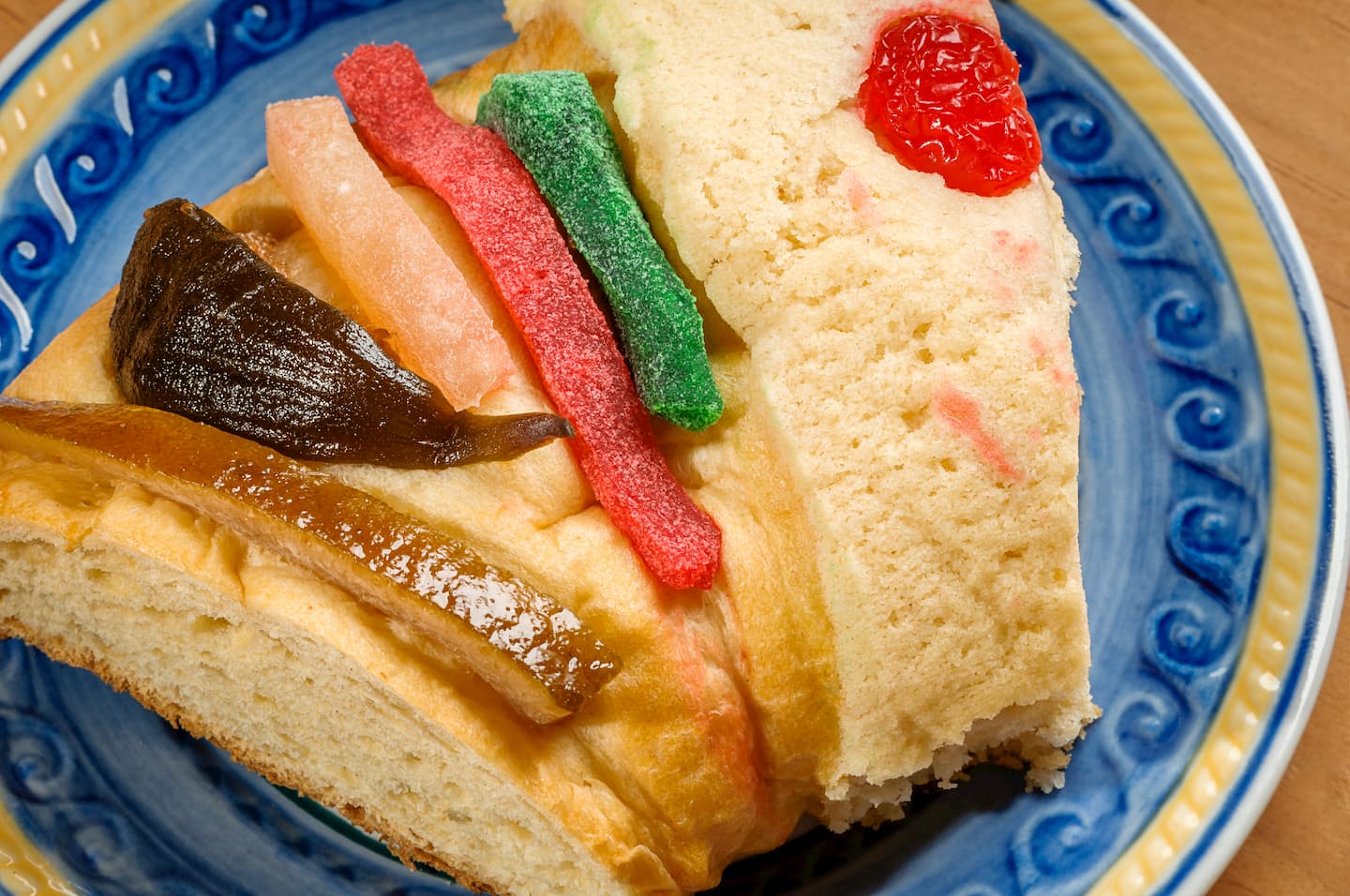
Día de Reyes (Epiphany/Three Kings Day)
When: January 5th
This Catholic festivity is celebrated across the Spanish-speaking world. On this holiday, families celebrate the Three Kings who brought gifts to Jesus on his birth by giving gifts to children on the eve of the 5th of January. The Kings are said to bring the gifts to the children much like the custom of Santa Claus in many parts of the Western world. A traditional food for the holiday is the Rosca de Reyes, a sweet round bread with a hole in its center covered in sugar and dried fruits, often accompanied with a warm cup of cocoa. Inside the Rosca are plastic figures of the Baby Jesus, and it has become customary for the person who finds the figure to host the meal on February 2nd.
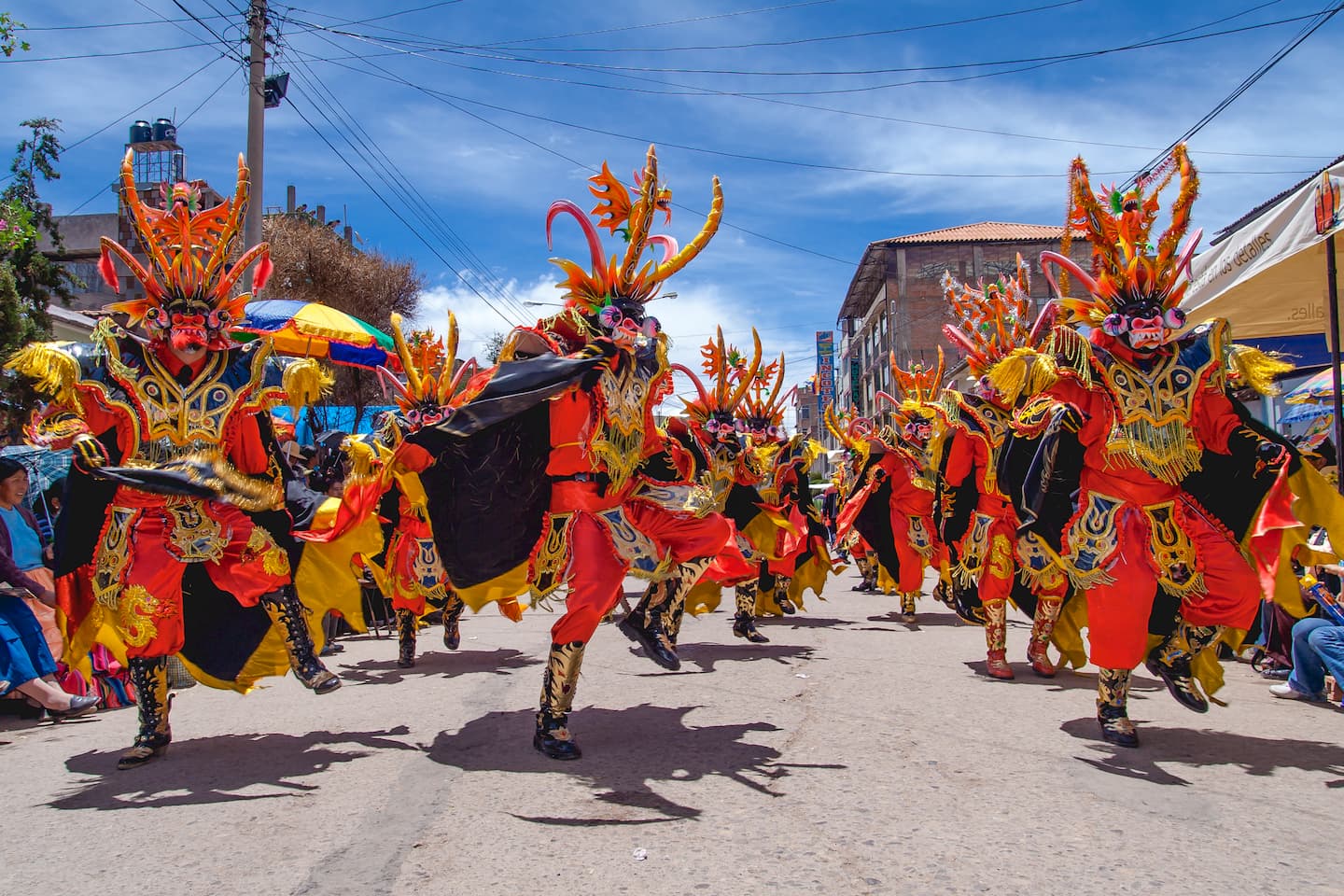
Candelaria
When: February 2nd
Candelaria is a religious festivity in the Catholic tradition, celebrating the presentation of the Baby Jesus before the Temple in Jerusalem, though in Mexico, it has also taken elements from Pre-Columbian harvest festivals. It is usually celebrated with a meal of Tamales and Atole, a sweet beverage made of maize. Parades, processions, and fireworks are a common feature as people carry figures of Baby Jesus to be blessed in Church.
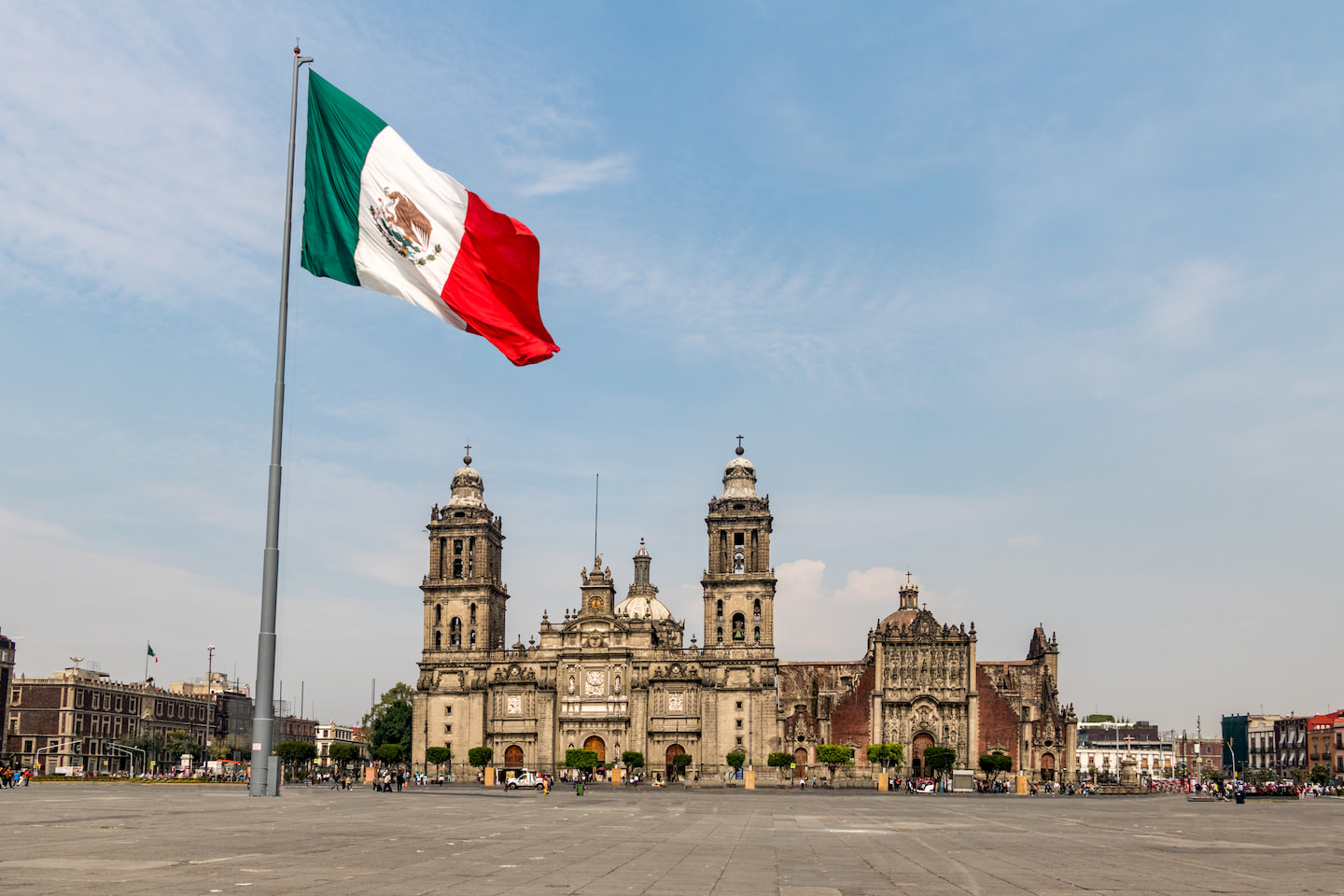
Día de la Constitución (Constitution Day)
When: February 5th
Constitution Day is a statutory holiday which celebrates the signing of the Mexican Constitution, which took place on February 5th 1917. The Constitution was drafted upon the end of Mexico’s Revolution and served as the basis for the modern Mexican State. It is the third Constitution that Mexico has had as an independent country and is still in use to this day. The Constitution establishes Mexico as a democratic country with separation of powers and a federalist form of government. It also enshrines individual rights such as freedom of speech and freedom of religion.
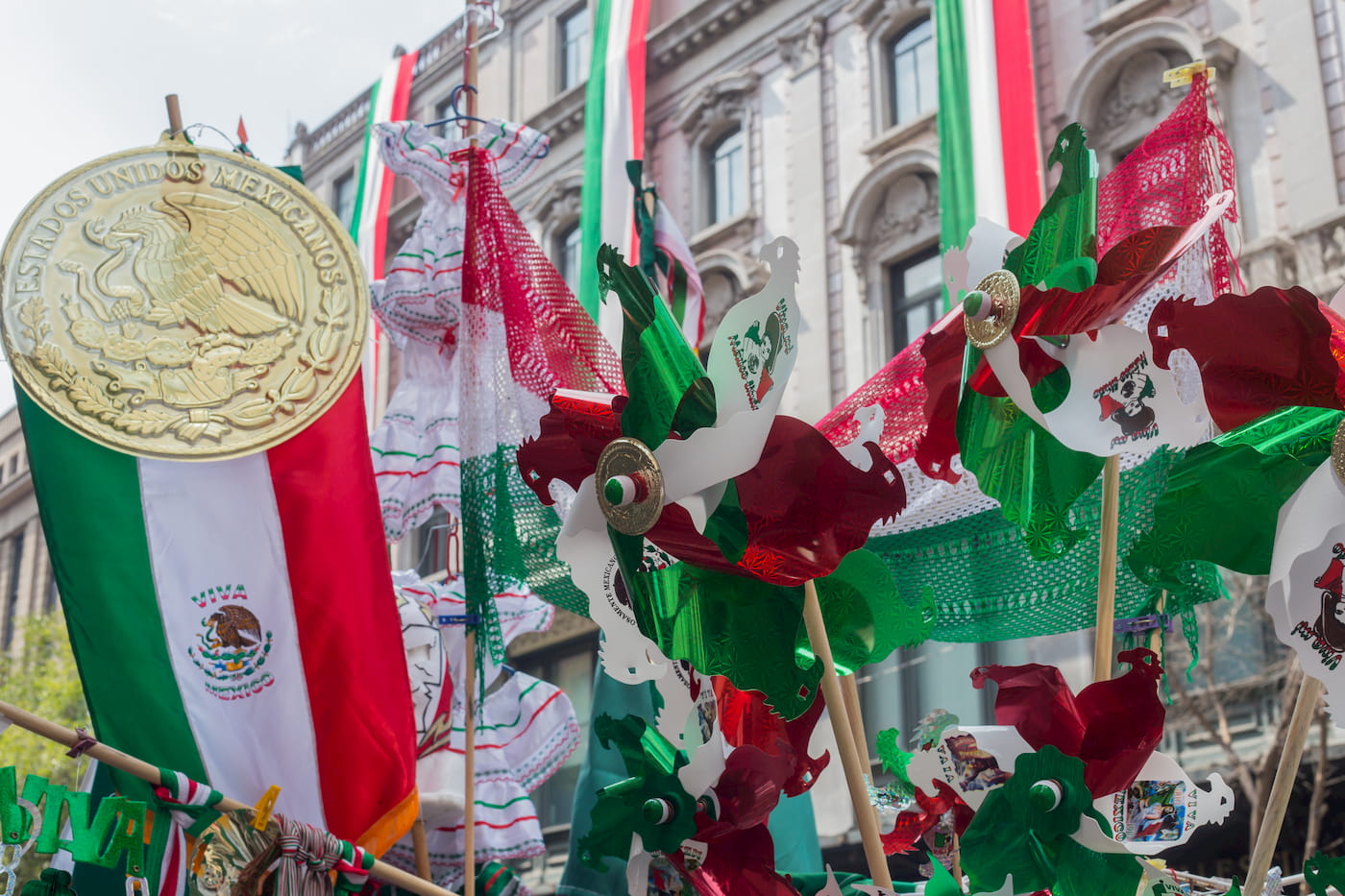
Día de la Bandera (Flag Day)
When: February 24th
Flag Day was instituted in 1937 to celebrate the country’s flag, which features three horizontal stripes in green, white, and red, with the country’s official crest of an eagle devouring a snake in its center. The day is not a statutory holiday and functions as a normal work day, lacking any unique traditions or celebrations.
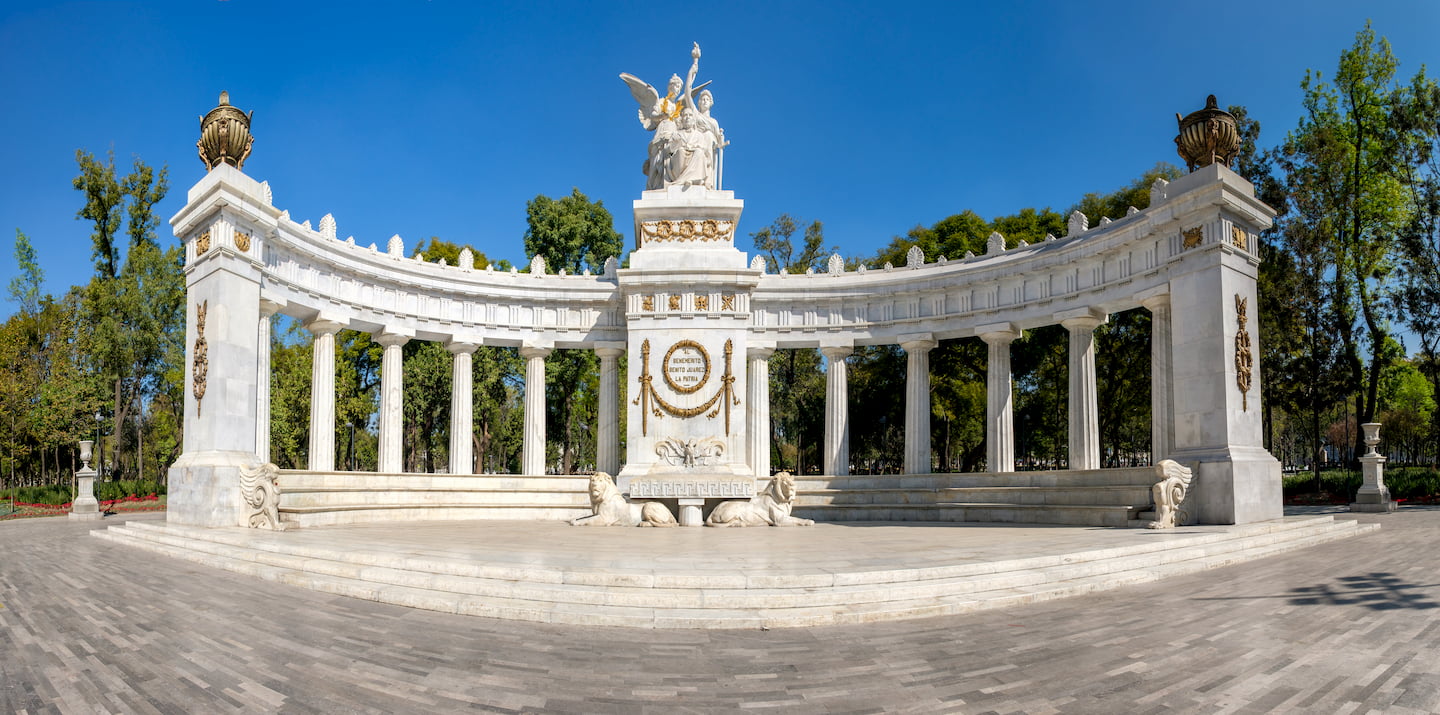
Natalicio de Benito Juárez (Benito Juárez’s birthday)
When: March 21
This day is a statutory holiday honoring the life of Benito Juarez, one of Mexico’s most beloved Presidents. Juárez was in power from 1858 to 1872 and is noted for drafting the 1857 Constitution, which introduced the separation of Church and State, as well as freedom of religion, to the country. He also fought off against French forces, who attempted to invade the country a second time, ruling in exile after Napoleon III occupied the country and installed Maximilian of Austria as a puppet ruler, with the support of Monarchist and conservative groups within Mexico. Juárez proved successful against this threat and re-established Mexico as a sovereign democracy.
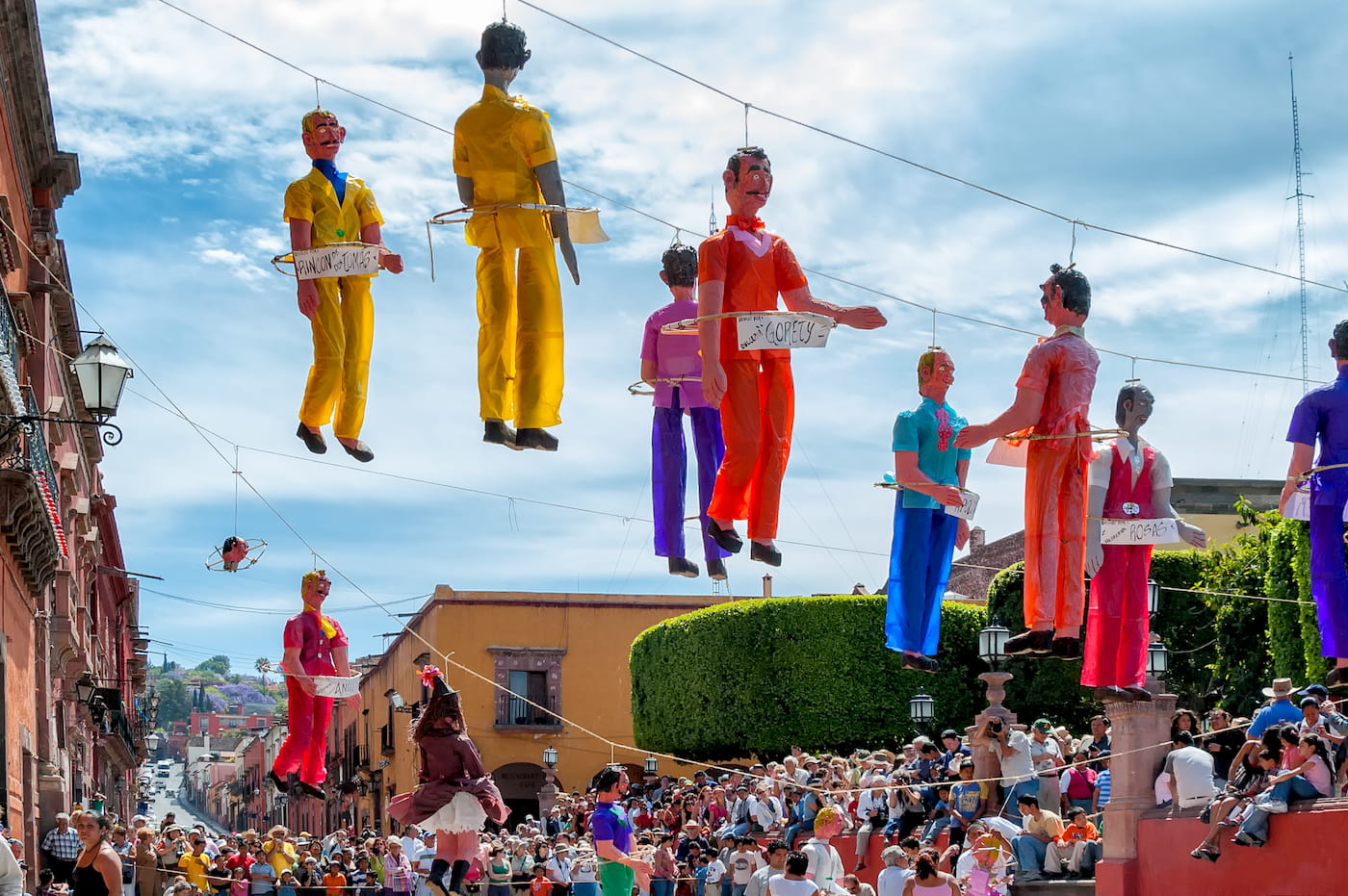
Semana Santa (Holy Week)
When: Varies every year
Holy Week is a Catholic tradition, commemorating the days leading up to Easter Sunday. In Mexico, the most important days in this week-long holiday are Maundy Thursday and Good Friday. Mexicans observe Maundy Thursday by participating in a ceremony known as the Visit of the Seven Houses, which commemorates the various stops Jesus made before being taken to his death. This involves visiting and praying in seven different churches throughout the day. This can be done alone, or by joining in various processions taking place in major cities.
Meanwhile, Good Friday in Mexico is marked by processions and special prayer services in Church. Recreations of Jesus’ death and Passion plays are also a popular way to commemorate Good Friday, with some being extremely elaborate and realistic, drawing crowds of thousands. One of the most famous recreations takes place in Iztapalapa, Mexico City, which attracts not only locals, but dozens of visitors and tourists too.
Día del Trabajo (Labor Day)
When: May 1st
Like in many countries around the world, Mexico celebrates Labor Day on May 1st, which is given as a day off to everyone in the country. This day, known globally as May Day or International Workers’ Day, is aimed at commemorating the historic struggles of the labor movement. In many Mexican cities, it is common to see celebratory marches organized by unions and political movements in honor of the day.
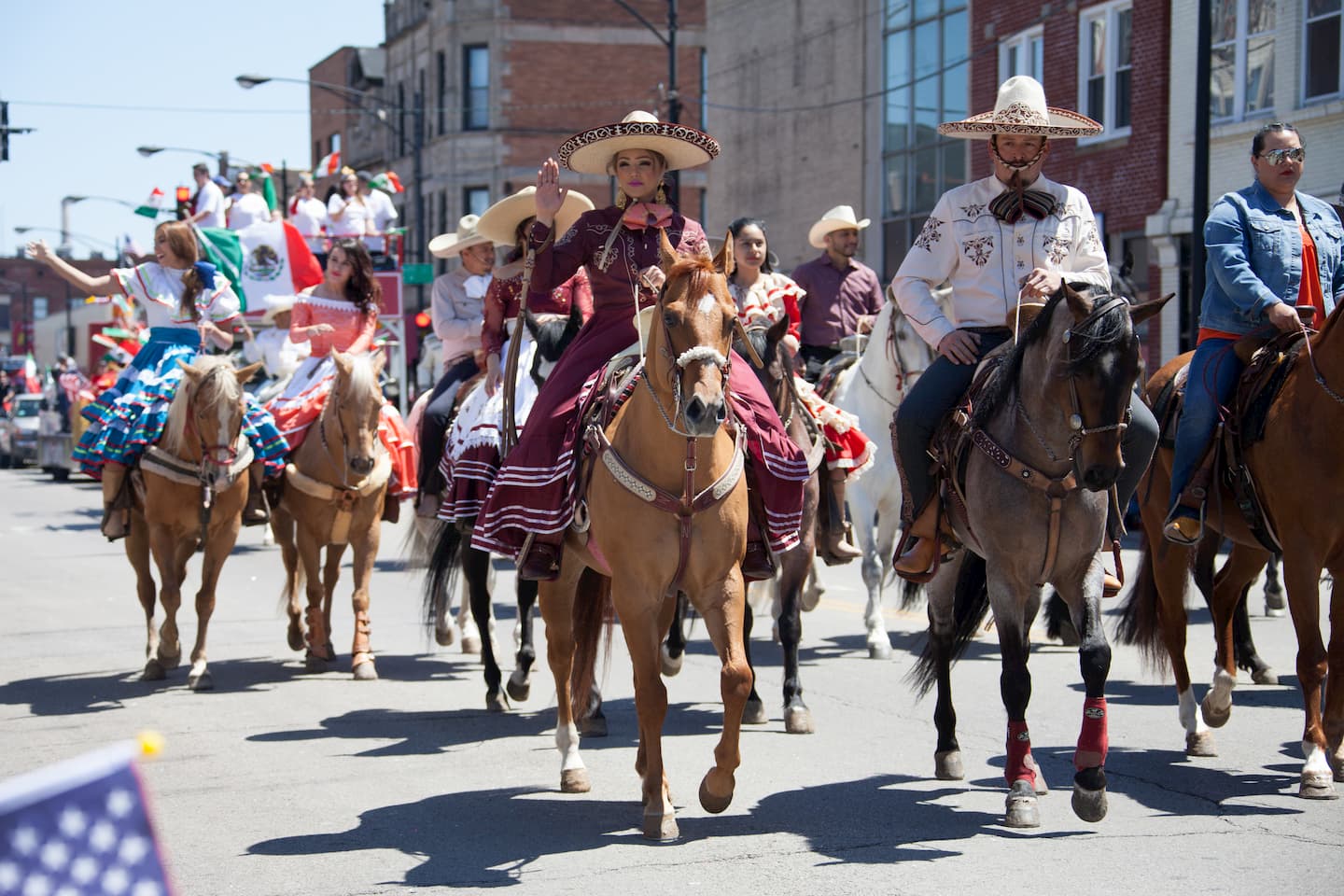
Cinco de Mayo/Batalla de Puebla:
When: May 5th
While Cinco de Mayo might be one of the most well-known Mexican holidays, it is not widely celebrated in Mexico, existing mostly as a statutory holiday and a day off work. Cinco de Mayo commemorates the Batalla de Puebla, a military victory in the war against France on May 5th 1862, in which General Ignacio Zaragoza lead Mexican forces to a surprise victory against the French army. Among Mexicans in the United States, the holiday has taken on a new significance, becoming a day to celebrate Mexican-American identity.
Día de las Madres (Mothers’ Day)
When: May 10th
Mother’s day is celebrated in Mexico on May 10th each year since 1922. While it is not an officially recognized holiday, Mother’s Day is very widely celebrated, and many offices do give people the day off. Similarly, schools usually mark the day by hosting concerts and festivals where children sing songs and perform dance routines for their mothers. Often, children will also make crafts in schools to give to their mothers on that day. It is also customary for families to gather together for celebratory meals on that day in order to celebrate their mothers and grandmothers. In Mexico City, the holiday is so popular that rush-hour traffic can be expected at all hours of the day.

Día de la Independencia (Independence Day)
When: September 15th-16th
Mexico celebrates its independence from Spain on September 16th. Celebrations begin on the eve of the holiday with the Grito, a ceremony commemorating the Shout of Dolores in 1810, which gave way to the War of Independence. The President will stand on the balcony of the National Palace and ring the bell of independence while chanting “Long Live Mexico!”. This is followed by a fireworks display. The next day, a military parade takes place in downtown Mexico City. During the holiday, people are out on the streets celebrating, or enjoying traditional holiday foods such as Pozole and Chiles en Nogada.
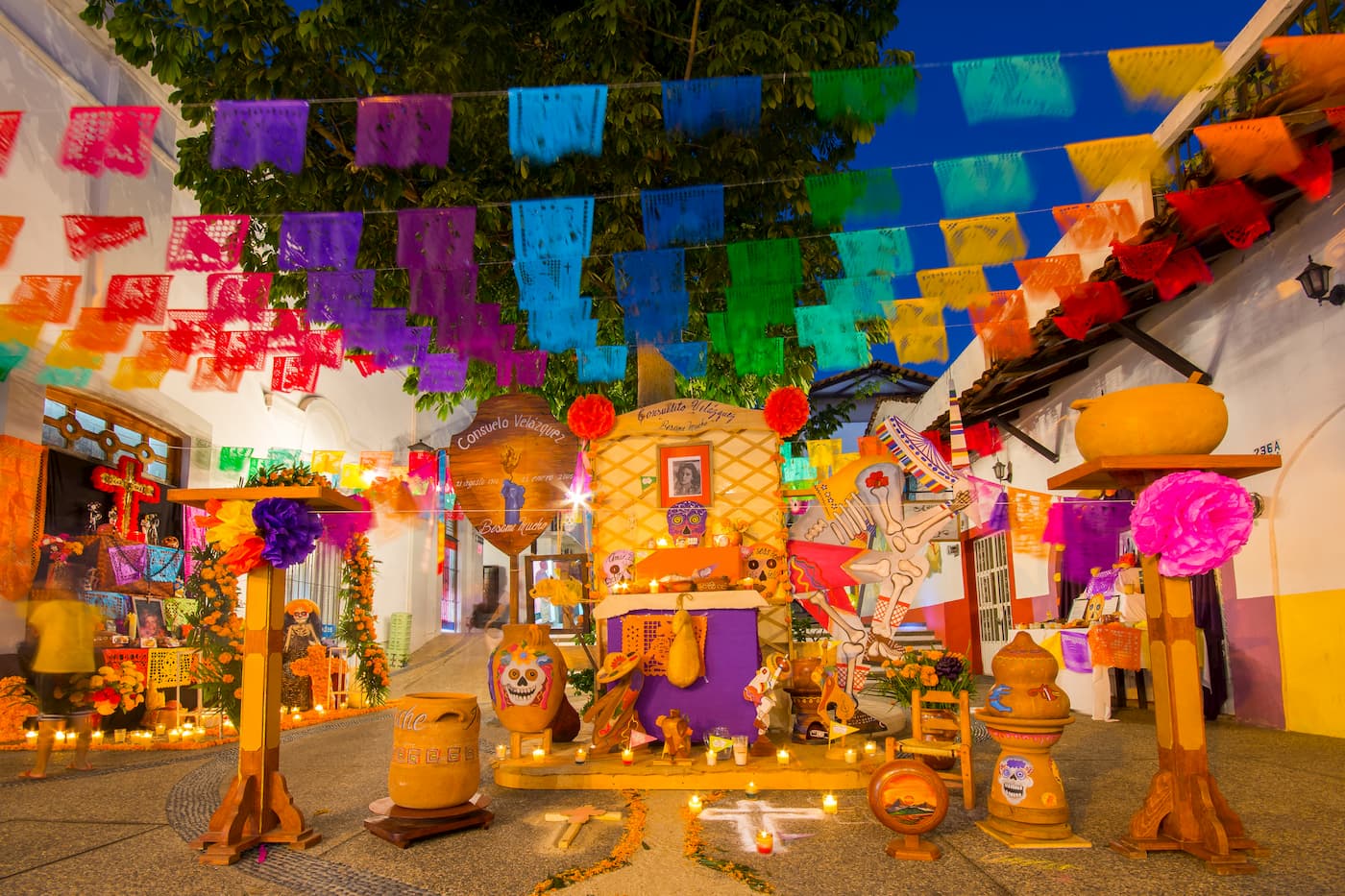
Día de Muertos (Day of the Dead)
When: November 1st and 2nd
Day of the Dead, or Día de Muertos, is a two day holiday honoring relatives who have passed away. On the holiday, the dead are said to return to visit the living. Colorful shrines known as ofrendas, are placed in homes and public spaces to welcome the deceased with their favorite foods and precious objects, as well as photographs and other objects. Families visit graveyards and often share meals next to the graves of their loved ones, and large celebrations take place in graveyards and public squares. Popular foods include sugar skulls and Pan de Muertos, a sweet bread shaped like a pile of bones.
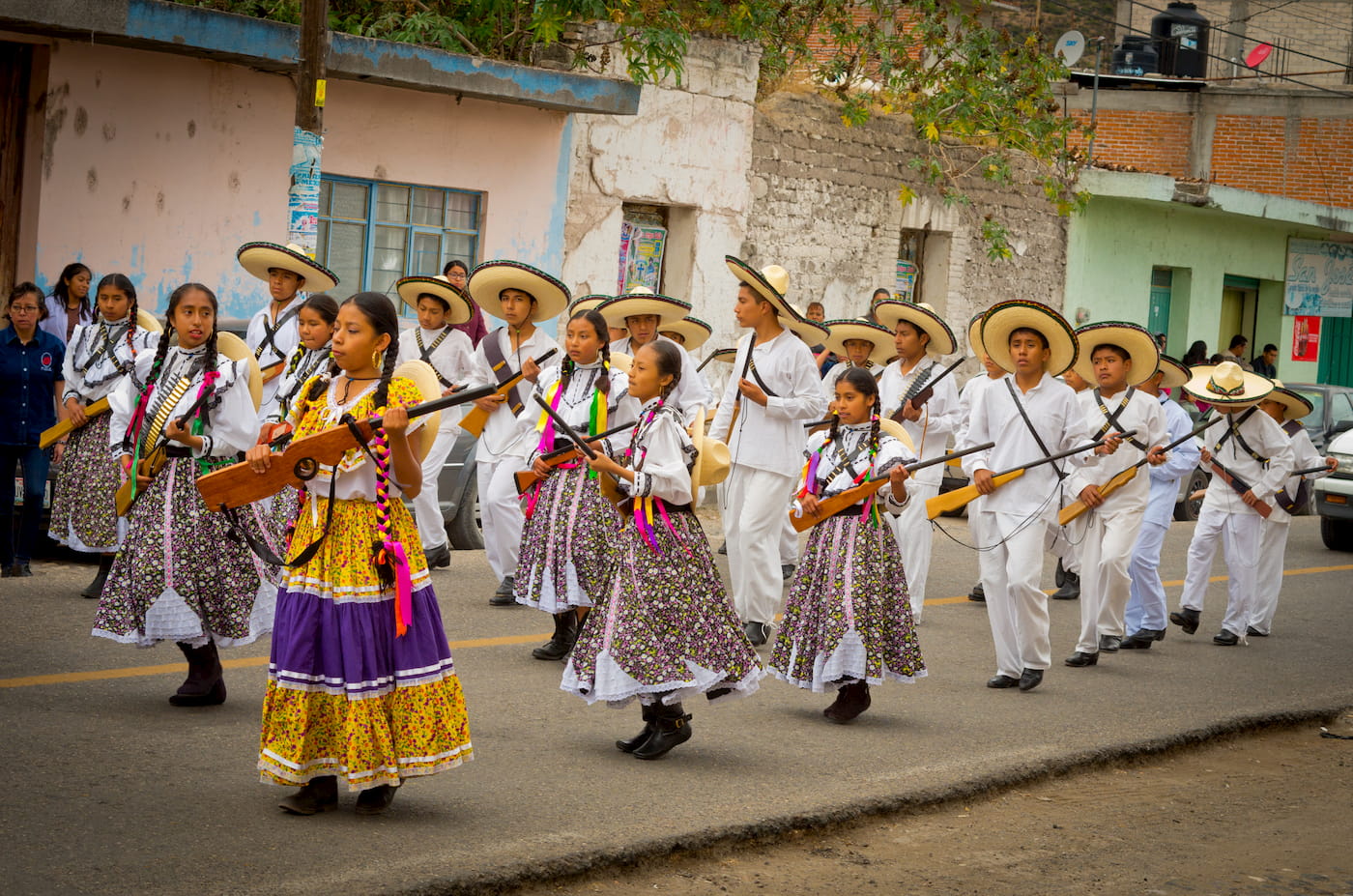
Día de la Revolución (Mexican Revolution Day)
When: November 20th
This statutory holiday commemorates the Mexican Revolution, which took place between 1910 and 1917. The Revolution was the birth of the modern Mexican State, beginning with the overthrow of Porfirio Díaz, and ending with the establishment of a new constitution, which is still used today. Mexico’s politics, arts, culture, and system of government were all deeply shaped by the Revolution, which has been immortalized in everything from Diego Rivera’s murals to a popular song genre known as corridos, to the films of the Golden Age of Mexican cinema to some of Mexico’s best novels, such as Los de Abajo and Pedro Páramo.
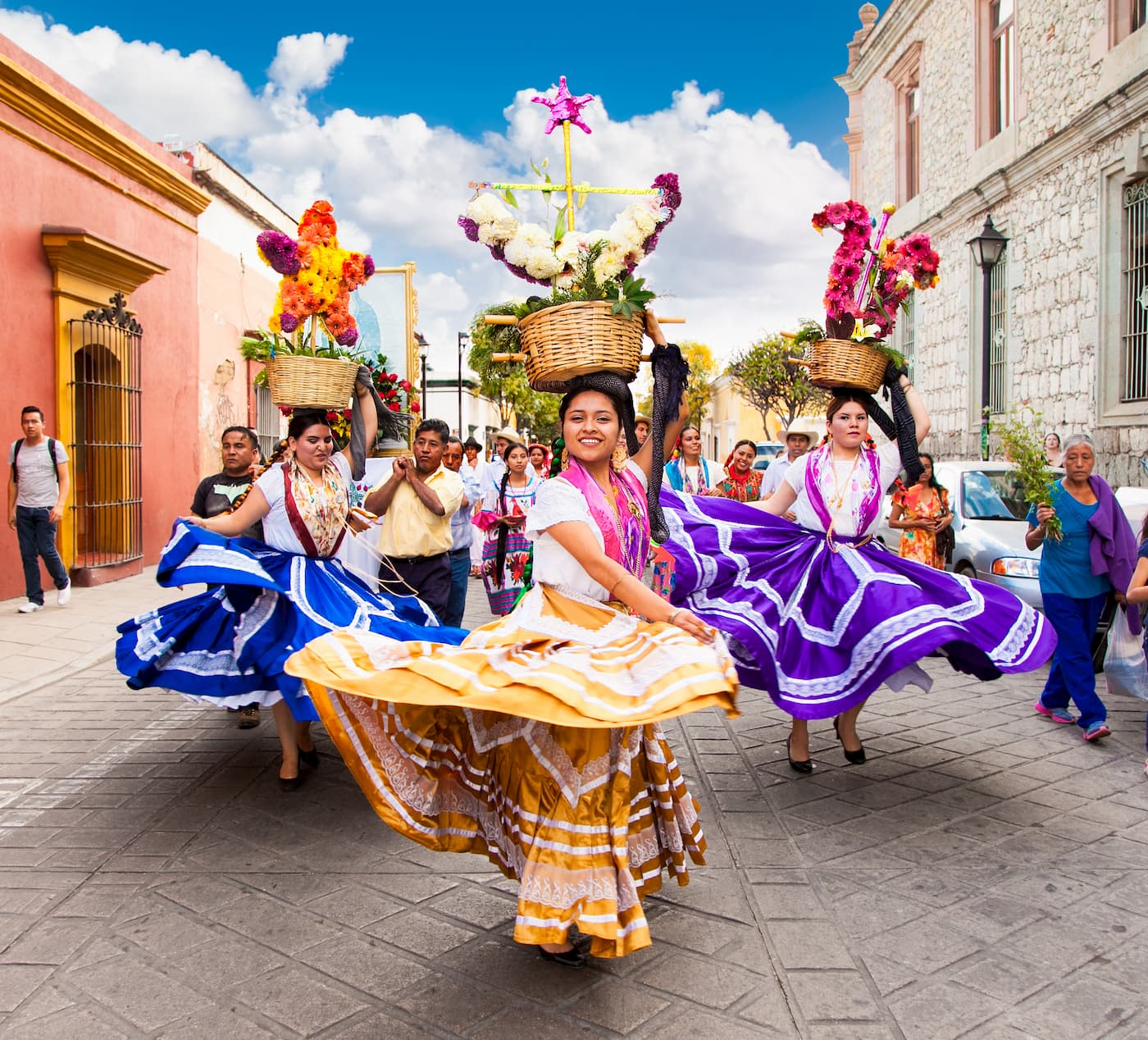
Día de la Virgen de Guadalupe (Day of the Virgin of Guadalupe)
When: December 12th
The Virgin of Guadalupe is Mexico’s patron saint. Every year she is honored by pilgrimages to the Guadalupe Basilica and Mount Tepeyac, in which millions of people participate. The pilgrimages are done by way of processions and will often include singing and dancing. In the Basilica itself, a large Mass is conducted, drawing large crowds that include celebrities, politicians, diplomats, and others.
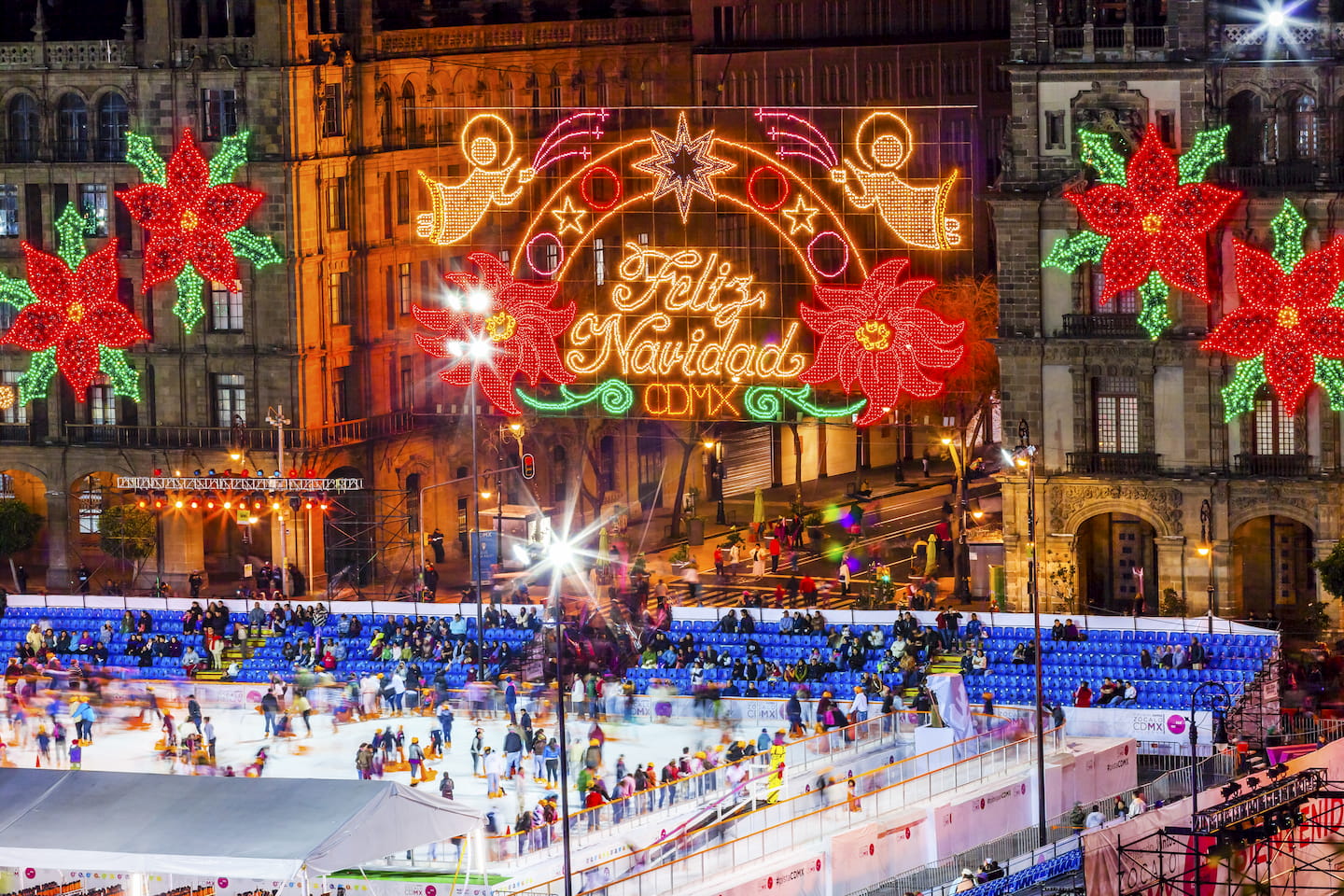
Navidad y las Posadas (The Christmas Season)
When: December 16th-25th
In Mexico, Christmas celebrations begin early. From December 16th until the 24th, many Mexicans celebrate the Posadas, nightly celebrations symbolizing the journey to Bethlehem before the birth of Jesus. Posadas involve a candle-lit procession and the singing of carols outside the location of the celebration. Once inside, guests break a piñata filled with fruits and nuts and enjoy food and beverages. Plays depicting the Nativity are often performed.
The larger Christmas celebration occurs on December 24th when families gather for a festive dinner. The meal will usually involve dishes like turkey, cod stew, Romeritos, and Tamales, accompanied by wine, cider, or special seasonal beers. Afterwards, it is common to head to Church for Midnight Mass.
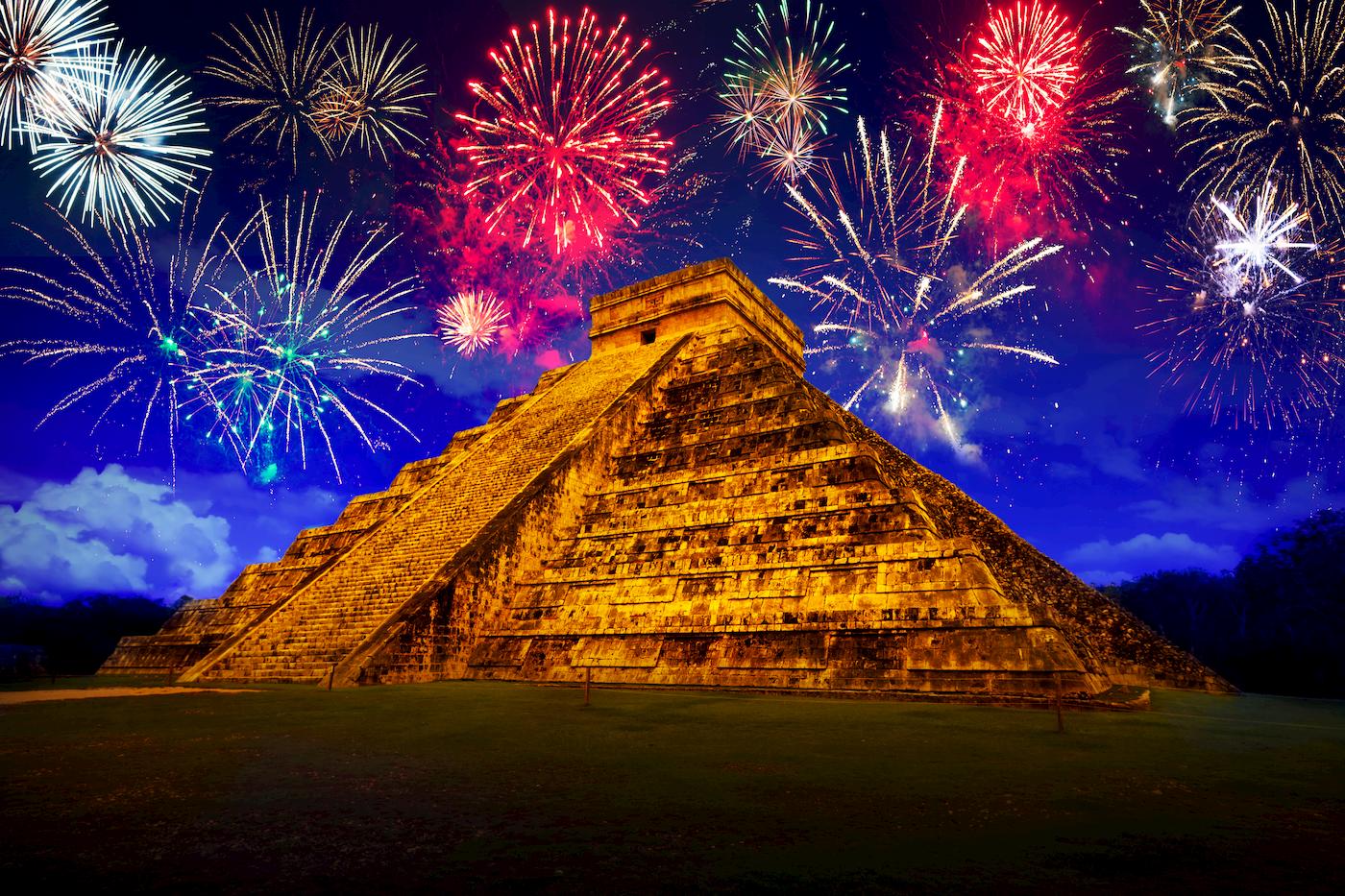
Año Nuevo (New Years’ Eve)
When: December 31st
Like in many countries, New Years’ Eve is usually marked by a large family dinner. This dinner will usually be accompanied by several unique customs. The main one is to eat twelve grapes during the last twelve seconds of the year, and making a wish for each grape consumed. Other popular customs include eating rice and lentils for abundance and sweeping the old year away with a broom.